Sold under six different names in North America, South America, and Europe, the Hillman Avenger may have seemed like one of the finest cars ever made, based on its spread through brands and nations. The Avenger may not have been the best car, but it was certainly a good cat at heart, with some unfortunate shortcomings. It became the Sunbeam, Plymouth Cricket, Dodge Avenger, Polara, 1500, and 1800, Talbot Avenger, and even carried the Volkswagen 1500.
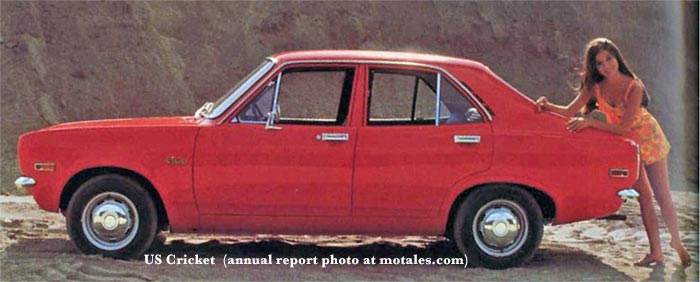
Rootes Group, which had acquired numerous English automakers, decided to create a car between their tiny Imp and their best-selling Minx in the mid-1960s. The Avenger would be a B car in European terms, or a subcompact in the United States, between the Simca 1100 and the Plymouth Valiant. The car would be more mainstream than their upscale Arrow, and sold by their mass-market Hillman brand. As such, it would have few frills, a low price, and conventional but up to date technology.
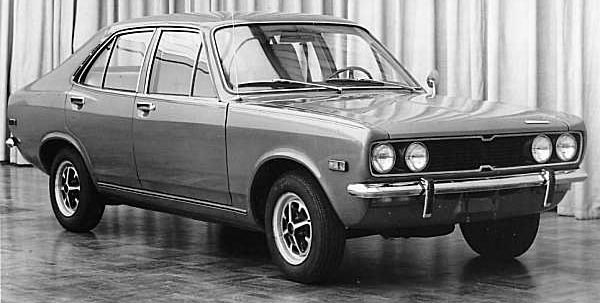
Roy Axe, the talented styling director, started working on the Avenger early in 1963, taking inspiration from Detroit. The tail was like that of the 1964 Plymouth Barracuda, and the front shares with future GM and Chrysler cars. Ahead of its time, perhaps, were the rectangular headlights on the low-trim version; the higher trim level had four round headlights. Late in the styling process, they gained vestigial fins on the front fenders, a common styling feature into the late 1970s, and a ridge in the middle of the hood.

The American inspiration did not extend to the front and rear overhangs, which were much shorter than any American car, to maximize interior space and handling; but they tried to get the cabin to look smaller than it was, with a longer-looking hood. Axe’s team eschewed standard waistlines, trying to integrate all portions of the car, resulting in something like Chrysler’s later “fuselage” design.
By late 1965, they had made a few quarter-scale clay models and viewed them in their portable viewing tunnel, which made them seem real-sized. They decided to use a semi-fastback roofline, adding a small waistline crease midway along the rear doors.
The interior was also mocked-up and tested, with particular attention paid to ergonomics. One result of that was placing all the controls right around the steering column; the car had a ribbon speedometer and horizontal HVAC control, except for the top trim level, which had a round speedometer—a differentiation which must have added a great deal to the cost.

Late in 1966, having seen the full size clays, executives gave the green light. Given the hookup with Chrysler Corporation, which was buying heavily into Rootes—a decision that it might have regretted later—the Avenger became one of the earliest examples of a car with a computer-aided body shell design. That no doubt helped it stay competitive until the very end, when its handling was still rated above better-funded and newer competitors. Less intelligent was the decision to save money on rustproofing, replacing an underseal with electrolysed paint, resulting in early rust in many cars.
The car was unusually easy to service, and its long time in production without major changes helped with parts availability. The oil can even be changed from the side of the car; the oil drain plug can be reached from above the motor. This was deliberate as it was meant as a “world car” to be sold in areas without strong repair facilities.
One clever aspect of the design was using the same sheet metal fascia with different plastic pieces to set up three trim levels. This was part of an overall effort to keep costs as low as possible for the struggling company, while still having a base, midstream, and high-end model (which turned out, in the UK, to be DL, Super, and GL). The standard seat trim on the GL was brushed nylon, which was coming into European vogue. The L-shaped tail lights were unusual; putting the fuel filler behind a panel between the tail-lights was essentially “a Hillman thing.” The license plate had to move to a spot under the bumper.
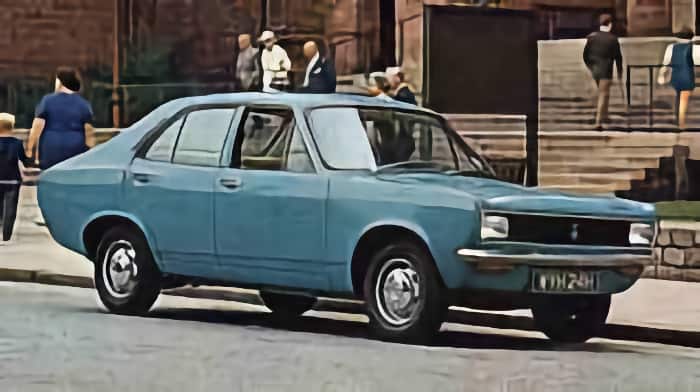
Knowing the importance of this car—Chrysler wanted to expand through Europe and export small cars back to the United States and Canada—they tested numerous suspension, transmission, and engine setups. That included three types of four-cylinder engine (boxer, V-four, inline four), aluminum heads and blocks; and air and rubber suspensions. Not surprisingly, the Avenger ended up being fairly conventional, partly because it was intended as a world car—to be built and sold on at least three continents. This was easiest with a conventional design using parts available anywhere.
Thus, it ended up with a four-link coil rear suspension, a front in-line four-cylinder driving the rear wheels, and a drum brakes in back (depending on the year and location, the front brakes were discs). The car was engineered to be cheaper to make than the Hillman Hunter (Arrow / Paykan), with fewer body panels; some claim that it would have been cheaper with leaf-springs in back, but that they showed too clearly and looked cheap (this is likely untrue). Ride and handling were likely priorities, given the standard anti-roll bars as well.
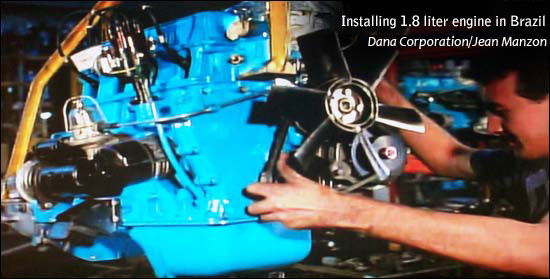
The same basic engine was made in no less than five displacements from 1.25 to 1.8 liters, a decision which may have helped to explain why Rootes failed: 1.25, 1.3, 1.5, 1.6, and 1.8 liters (in cc: 1248, 1295, 1498, 1599, and 1800). The most common engine, the 1.5 liter, had an 86.1mm bore and 64.3mm stroke; the 1.8 liter engine was only sold in South America. It was a pushrod overhead valve engine whose main difference from other OHV engines was shorter than usual pushrods. Ironically, they did not use Hillman’s existing 1725cc engine—which American executives were weighing for their own subcompact (which was never made).
The engine used old technologies but still managed a 7,000 rpm redline, and was both strong and quiet (though they tended to get noisier as they aged). The engines were tough and grew a good reputation in Iran, where they were used in the locally-made Paykan until the supply ran out. The transmissions were also strong and reliable, and they were said to be easy to repair and maintain.
On the down side, the optional dual Zenith-Stromberg model CD carburetor setup, used with a hot cam, was unnecessarily hard to tune. The mixture setting screw was inside the hollow rod where the damping fluid went, requiring a long Allen key and holding wrench. “85LebaronT2” wrote in Allpar that the bypass valves would stick open; the the thermal mixture valves often failed; and the diaphragms died early. These issues may have been addressed in later years.

When the Hillman Avenger was launched in February 1970, the press was impressed with its cornering and styling; the suspension choices paid off right away, as did Roy Axe’s careful work on the exterior and interior. The car was just what the public wanted—even though it launched a year after Austin’s five-speed front-wheel-drive Maxi, which had a hatchback and overhead-cam engine.
Later in the year (October 1970), Hillman added an Avenger 1500 GT model, which used a dual-carburetor version of the 1.5 liter engine with a good deal more power. Both carburetors were single-barrel models. The upgraded power was accompanied by different wheel trim and tape-based stripes on the sides. By then, over 50,000 Avengers had already been made, a good number for an English car; and a wagon was added in early 1972, in Deluxe and Super trim.

The Avenger and Cricket were built on a new assembly line at the newly expanded Ryton plant (near Coventry). Bodies and pressed panels were shipped by train from the Linwood (Scotland) plant, and the powertrains came from Stoke. Trains carrying bodies to Ryton came bac with Imp powertrains. Avenger production moved to Linwood in 1976, cutting a great deal of transportation.
Starting in 1972, along with the wagons, a new base model was added; buyers could choose engines, but they were stripped down to the very basics otherwise. By the end of the year, a more luxurious model than the GL, with a vinyl roof and sports wheels, was added and dubbed GLS. Motor called it refined, comfortable, well-mannered, and nicely sized.
A two-door showed up months later, in March 1973; it had four versions, the base model, Deluxe, Super, and GT (the GT had been dropped with the arrival of the GLS). All had rectangular headlights; the GT had a vinyl roof. But, oddly, Hillman chose to drop the front anti-roll bar, and replaced their disc brakes with drums. The 1973 models also had 1.6 liter engines instead of the 1.5 liters—the 1.3 continued unchanged.
Next, the Avenger spawned a limited-production Hillman Tiger for rallying, with a 1.5 liter engine pushing out 90 hp net and 90 lb-ft of torque. Sold in yellow with a broad black tripe, the car had the square headlights, a hood bulge, magnesium Minilite wheels, and a rear spoiler; later versions went to the round quad headlights, a black hood, and cheaper Exacton alloy wheels, adding a red paint option. BRM sold (for racing) twin-cam 16-valve heads for the Avenger blocks, bringing power to 205 hp from 2 liters, used in UK rallies from 1974 to 1977.
Meanwhile, Rootes Group, now Chrysler UK, was losing a good deal of cash. The company negotiated a government rescue program, agreeing to make more jobs in Linwood, Scotland; so Avenger production moved to Scotland, where the stamping plant was. Chrysler, in acquiring Rootes completely, dropped the old brands; so buyers saw Chrysler Avengers in late 1976 and Chrysler Hunters in 1977.

Chrysler took the opportunity to give the Avenger a refreshed appearance by using larger rectangular headlights, moving the turn signals to be next to them instead of in the front bumper; an Alpine-style dashboard; and a new grill showing the Chrysler logo. The car now looked like the new Chrysler Alpine from the front and, to a degree, from the inside. The tail-lights were changed to a rectangles, from the Ls, by capping off part of the old tail-light holes. Sports models were replaced by the Avenger-based Sunbeam.
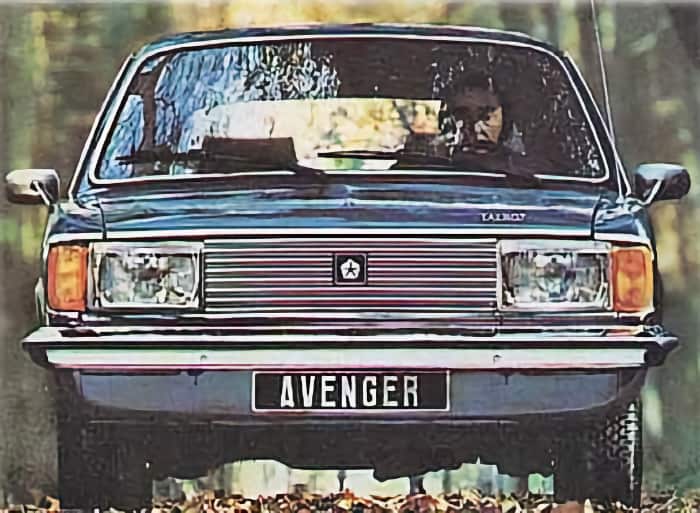
The revised Avenger did well in reviews; CAR showed it beating the Ford Cortina and Vauxhall Cavalier. Due to their economy, ease of repair, handling, and 81-horsepower engine, the Avenger was a popular police car in the Midlands, Scotland, and North England.
The Deluxe and Super became the LS and GL in late 1977, modernizing the labels; the GLS wheels were replaced by cheaper ones with wheel covers. The 1979 LS went without hubcaps, and the slower-selling two-doors were dropped.
Chrysler sold Rootes and SIMCA together to Peugeot for a tidy sum—entirely for SIMCA, which remained profitable. Thus the UK saw a Talbot Avenger for 1980, and all Avengers gained the GLS’ vinyl roof. Then the GLS itself was temporarily dropped, coming back as a wagon with an 80 bhp engine and roof rails.
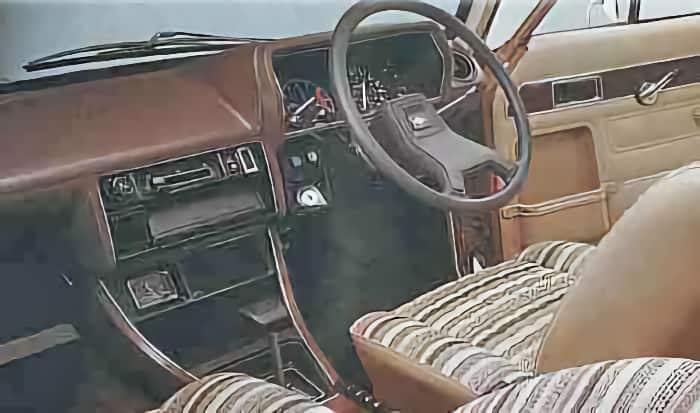
Finally, in 1981, Peugeot closed the Linwood plant, and Avenger production came to a halt. Rootes and Chrysler and Peugeot had, together, made nearly 750,000 Avengers. Many were exported as Sunbeams, but most were sold in the United Kingdom.
Attractive but poorly made, the Plymouth Cricket was exactly what nobody had asked for when it arrived in the United States in late 1970. The company also tried selling the Simca 1204—a Simca 1100 with a larger-than-usual engine—and the Dodge Colt; the Colt and Cricket were both launched in the same year. Chrysler thus sold two captive imports, from two companies, trying to serve its target 12% of a very small market.

A beautifully engineered car, it was far smaller and slower than just about anything else in the United States. Quality was much better than the early Crickets, but as an even smaller car, it found few friends. The Colt’s wheelbase was even shorter (95 inches to the Cricket’s 98), but it had a 100 horsepower (gross) engine compared with the Cricket’s 70 gross horsepower (the Pinto was at 75 or 100, and the Vega’s was at 100 or 110, depending on the option; the smallest Valiant engine produced 125 horsepower). Both Cricket and Colt sold for under $2,000 in 1971 (the Cricket listed for $1,915).
Net horsepower for the 70-gross-hp engine was rated at 55 (70 lb-ft), with a new dual-Zenith-carb version bringing the net to 70 (with 74 pound-feet).
While 70 horsepower seems small, keep in mind that the car had a bit more torque than horsepower (83 pound-feet), and only weighed 1,907 pounds. The Valiant weighed a thousand pounds more, and its base engine was 125 horsepower; the Cricket would be slow, even with the four-speed manual transmission, but not that much slower.
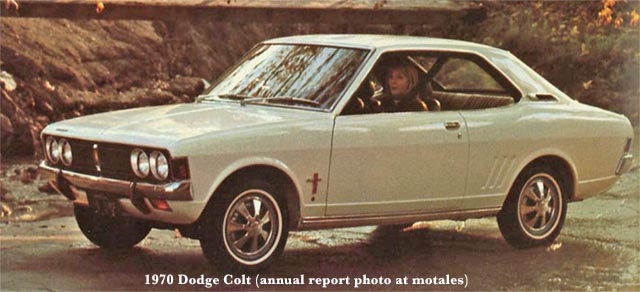
The original plan was to create a new car in the United States to match the Chevrolet Vega and Ford Pinto. This was part of Chrysler’s odd strategy of simply doing whatever its main competitors did, despite their much larger size. Ford used a British four cylinder engine in their little car, and Chrysler, likewise, decided to use a British (Rootes Group) 1.7 liter four-cylinder.
The executives changed their mind, likely due to cash shortages, and looked for a car they already made. The upcoming Hillman Avenger looked American, and its technology largely matched Chrysler cars of the time. The only styling oddity was the Hillman way of putting the fuel filler between the tail-lights, under a panel.
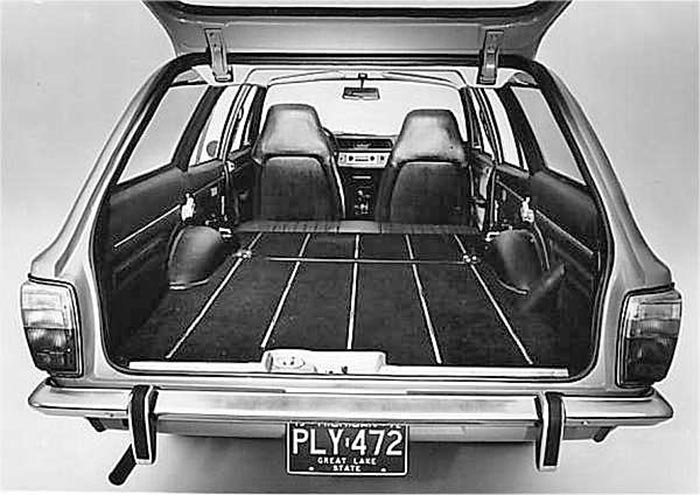
Plymouth made few changes other than changing the name to Cricket. They only included the larger engine, made the front disc brakes standard, and added side markers and front seats with built-in headrests to meet local rules (for the small 1973 run, they also added a seat-belt warning light). The rubber-edged vertical bumper guard option became standard in the 1973s, too, to meet new rules. Finally, since the USA did not allow rectangular headlights until years later, all Crickets used the Avenger GL’s quad headlamps.
| 1972 Cricket Dimensions | Metrics |
|---|---|
| Headroom F/R | 37.8 / 37.2* |
| Legroom F/R | 39.8 / 31.5 |
| Track F/R | 51 / 51.3 |
| Turning Radius | 31’ 9” |
| Wheelbase | 98" |
| Width | 62.5" |
| Length | 162” (sedan) 166.9" (wagon) |
| Height | 54.9" |
| Oil | 4.2 quarts |
| Cargo capacity | 60 cu. ft. |
| Antifreeze (w/heater) | 8.4 quarts |
| Tire Size | 5.6 x 13, 4 ply rated |
| Fuel Tank | 10.8 gallons |
The Cricket was announced in a June 1970 press release, setting the unveiling for November. The first 280 Crickets arrived on time, on November 20, 1970, with a manually choked one-barrel carburetor. From August 23, 1971 on, buyers could get the twin carburetors with an automatic choke and optional air conditioning and automatic transmissions.
The MacPherson strut front suspension, rack and pinion steering, coil-spring rear suspension, front disc brakes, and four-speed manual transmissions were the shape of things to come, and the Cricket sold fairly well for its class in 1971, with 27,682 buyers. For 1972-73, though, sales dropped down to 13,882—combined—partly, one guesses, due to a price hike to $2,017 in 1972, breaking the two-thousand-dollar barrier (the wagon, launched in 1972, listed for $2,399); and partly due to the build quality.
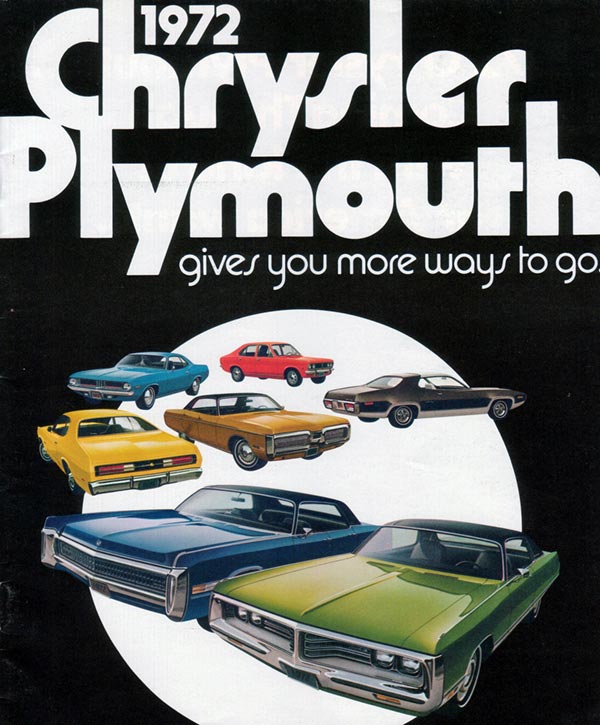
A 98 cubic inch engine was optional for 1972, and was needed for the automatic transmission. The wagon, which showed up in Spring 1972, had the 1.5 liter twin-carb engine; an automatic was optional.
| 1972 USA Specs | Net HP | Net Torque |
| 91 one-carb | 55 @ 5,000* | 70 @ 3,500 |
| 91 two-carb | 70 @ 5,400 | 75 @ 3,750 |
| 98 man. 2-bbl | 85 @ 5,600 | 90 @ 3,600 |
| 98 auto 2-bbl | 80 @ 5,600 | 85 @ 3,600 |
* 69 gross horsepower. The Valiant slant six started with around 100 horsepower.
The Cricket had just a 98 inch wheelbase, and was only 167 inches long; it was 62.5 inches high. It ran on regular gas, with an 8.5:1 compression ratio (another source claims 9.2:1). The car used 13-inch wheels; a typical Valiant or Duster had 14-inch wheels.
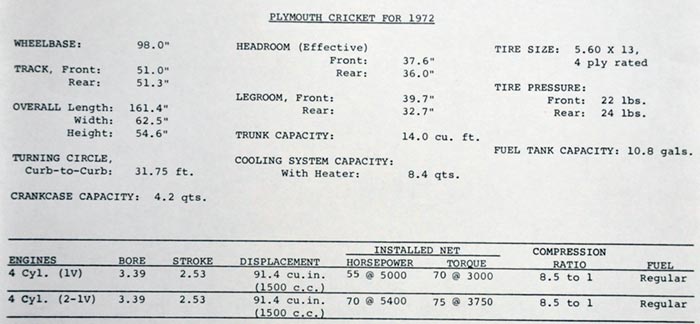
The last date any Cricket was brought to the United States was January 1, 1973, ironically the same year as the first major American fuel crisis.

The Cricket’s failure were partly timing, but mainly quality. The car was brought to the United States before the bugs had been found in the UK, and it was not tested on harsh American roads in the harsh American weather. The price was close to the Dart/Valiant, a much bigger car with far more torque; and in 1970, no-one even imagined anything about a fuel crisis, so why bother with a small car the price of a larger one?
It was a shame that the Cricket arrived too early; it had good handling, good room for a car smaller than the Pinto or Vega, and a pleasing design. Still, they sold around 41,000 Crickets over roughly two years—three model years. If it had been a higher quality car, and kept on into late 1973, it would likely have been a big success; and it would have met emissions standards, other than the hot-cam version, into the late 1970s. (That said, one reason for not important cars in 1973—for selling cars imported in 1972 as 1973 models—was to avoid conforming to new regulations. They were titled as 1973 cars but the VIN indicates 1972 as the model year.)
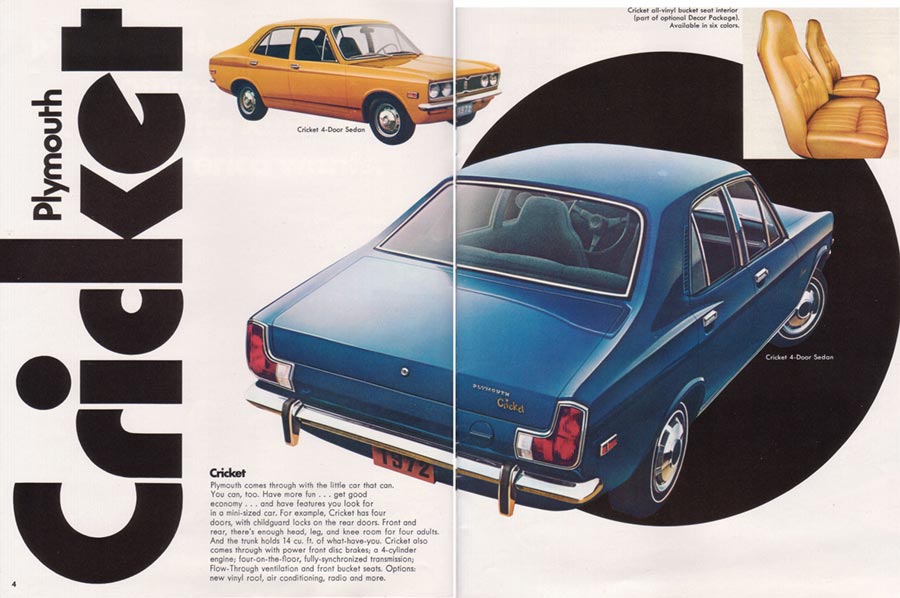
Chrysler did a lot of that at that time; 1969 Valiants came with 170 cubic inch slant sixes from September 1968 until December 31, 1968 and then were equipped the 198 engine from January 1, 1969 until the end of 1969 production.
The Dodge Colt, a rebadged Mitsubishi, replaced the Cricket starting in 1973. Its quality was well above most American cars.
Chrysler Canada kept the Cricket name when they moved from the Avenger to the Colt. The Plymouth equivalent to the Colt GT was the Plymouth Cricket Formula S, using a name from past Barracudas. These Crickets actually had different grilles and taillights from the Colts; and they were technically dubbed the Cricket OHC as a way to differentiate it from the British versions. The Cricket name was replaced in 1976 by the Plymouth Colt. The Canadian naming was also used in Puerto Rico, except that in PR, the Cricket name went into 1976 as well.
Chrysler do (of) Brasil made Hillman Avengers from 1971 to 1980 as the Dodge 1500, 1800, and Polara; Chrysler Argentina also made these cars, except the Polara. Chrysler do Brasil used the Polara name because the original Portugese translation of Dodge (“Dodginho”) did not sell well; moving it to to Polara, which had already been used on Valiant-based cars, fixed that. They only sold the two-door, which had different rear side windows from the UK version.
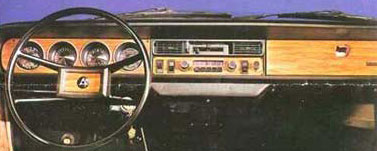
In 1975, the Avenger was the first car to be converted to alcohol as part of Brazil’s program to use excess sugar cane as fuel. 4 Rodas described the changes as including higher compression, a larger coil, a smoother spark advance, revised carburetor (the stochastic ratio was 1:11 rather than 1:15), and an intake with a hot water jacket to preheat the fuel. A small gasoline reservoir was helped owners actually start their cars. The results were around 6% lower fuel economy, 6% more peak horsepower, and, oddly, the loss of nearly one second in 0-60 mph runs.
Brazil added GLS and GL models in 1980, making it the first Brazilian production vehicle to have a standard automatic transmission; sales went up to around 13,000 per year as a result. Chrysler left Brazil in 1981, and local production of the Dodge 1500/1800 ended.
The 1980-81 versions, sold by Volkswagen after they had purchased Chrysler Argentina in 1980, were dubbed “Dodge 1500 made by Volkswagen Argentina” (the "Made by Volkswagen Argentina" portion was added in a sticker on the rear window or a metal plate in the front). A 1982 restyling gave it more of a Volkswagen Rabbit/Golf look, and a “new” name—Volkswagen 1500.
In Brazil, despite the larger displacement (1,800 cc), the Polara only ever used a single-barrel carburetor. It may seem strange to have a larger engine with more skimpy carburetion, but the larger displacement was needed because of the low octane of Brazilian gasoline at the time.
The exception was the 1980 Polara GLS, which left the factory with the two-barrel carburetor and Weber flow from Wercabrás (Weber + Brazil), a company that succeeded DFV Vasconcelos, from the DFV carburetors, in the market. This Weber carburetor had a second mechanical drive stage, and only used gasoline for fuel.
The Polara 1800 engine was converted to alcohol by factory engineers while it was still owned by Chrysler, but Volkswagen did not invest in making that engine, as it had already decided to stop making the car (unlike what happened in Argentina). Only the 318 V8 engine from the Dart line and Dodge trucks were made for alcohol; this required modifications to the carburetor, such as using chrome plating to resist corrosion. Volkswagen invested in this process because the first VW trucks in Brazil used Dodge V8 engines. These were the “canavieiros” engines.
Rootes meant for the Avenger to be big in Argentina even during development. Chrysler-Fevre Argentina S.A. started producing Dodge 1500s not long after US sales began: August 1971. They even got a higher-displacement version of the same four-cylinder, a 1.8 liter which would have helped the American Cricket. The company cleverly kept the name and looks of the car secret in its early advertising, to build up suspense.
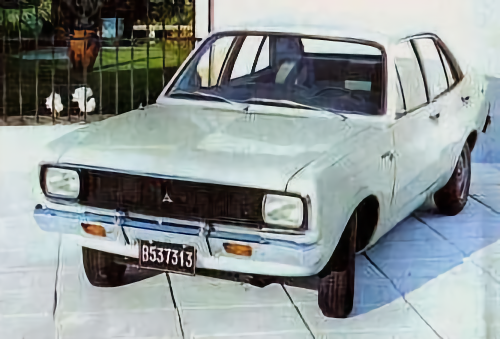
On launch, the car was reviewed favorably for its agility. The car was more agile than its American competitors, with an independent suspension and anti-roll bars, and it was easier to fit into parking spaces and small roads.
As in New Zealand, Argentina only made sedans, and, later, wagons (estates); they didn’t make or import two-doors. The rear lights were changed to plain horizontal ones, which would come to the UK; but they were stamped that way from the start in Argentina, while the change in the UK was done with poorly-fitted inserts.
As in the UK, buyers had three models, all four-door sedans. The base had the 72 horsepower 1.5 liter engine; the SPL had higher trim and starting in 1974, the option of an automatic and 92-horsepower, 1.8 liter version of the same engine. Finally, at the top of the line, was the Dodge GT-90 with the twin carburetors.
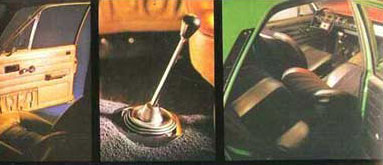
Like the Avengers in the UK, the 1977 Dodge 1500 series were restyled, getting a new grille and larger headlamps; a more powerful model, the GT-100, was added to the top of the line, using the 1.8 liter engine topped by twin Stromberg carburetors. With 105 bhp, a substantial increase, the company put in a big 215 mm (8.5 inch) clutch; it was only sold in dark blue and black, with stripes. Wagons showed up in 1978, dubbed Rural. These changes and options must have helped; they sold 26,148 cars in 1979 and 27,627 in 1980, after years of running under 15,000.
With Hillman already owned by Peugeot, cash-strapped Chrysler sold off their Argentinian operations to Volkswagen in 1980. Volkswagen added stickers for a while until they tooled up badges, to declare these Dodges to be built by VW. Finally in 1982, they added a VW-like grille, with new front and rear lights and a new interior, including the dashboard; and it became the Volkswagen 1500. Models were base, Full, 1.8, 1.8 Full, and Rural Full; the latter was the wagon, with the 1.8 liter engine and air conditioning. A new stripped down model was launched in 1987—the basic design was now 16 years old. For 1988, buyers could get a five-speed manual transmission, and more buyers could get air conditioning.
Argentina produced 262,668 Dodge 1500s and Volkswagen 1500s. The car was finally dropped after 19 years, nearly unchanged, in 1990, with a solid reputation for durability.
Todd Motors had distributed all Chrysler and Rootes products in New Zealand since 1924, and, starting in late 1970, started making the Avenger as well, in four-door sedan form and with the 1.5 liter engine—the largest available other than the South American exclusive 1.8 liter. At about this time, Todd also talked with Mitsubishi about making Galants locally, which started in 1972—for coupes only, to separate it from the Avenger (which is why they made no Avenger coupes). This was oddly prescient of Chrysler in the United States, which made four-door Dodge Avengers while rebadging Mitsubishi coupes as Dodge Avengers around the turn of the century.
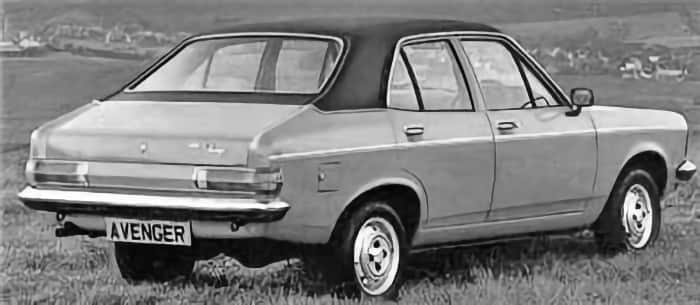
The Avenger was made by Todd Motors using knockdown kits from the UK, using some local content to meet national rules, and whatever changes were needed and practical. Still, Todd apparently built the Avenger to a higher standard than Hillman itself did.
One year after the Avenger itself was launched, Todd launched the TC; it had four doors but was sportier, with sports seats, black side stripes, vinyl trim, bright colors, and dual carburetors (TC stood for Twin Carburetor). This was replaced at the end of 1972 by the Avenger Alpine, a sport/luxury package with better seat padding, four round headlights, a vinyl roof, and the twin carburetors; it was designed to be a miniature Valiant Regal, in essence. (The Alpine badge was removed when the Chrysler Alpine reached New Zealand.) 1973 also saw metric speedometers on the Avengers, a minor difference from the still-Imperial UK versions.
New Zealand car sales had reached 100,000 units per year in 1973, and the government allowed more imports given the inability of local plants to keep up. That seemed like a good time to launch the (imported) Avenger Alpine GLS, which added heated rear windows and other features. Imported Avengers could have interior colors such as blue and purple, while the domestic cars used only beige or brown vinyl, with white headliners; but some English dashboard colors faded quickly while the New Zealand’s black dashboards braved the sun well.
As 1974 dawned, both the UK and New Zealand upgraded the top engine to a 1.6 liter version. In addition, the rectangular Hillman grille badge was switched to a round badge; and a Borg-Warner four-speed automatic became optional. The Alpine would later lose its dual carburetor setup; and the 1.3 liter engine was added, as a price-reduction option, to respond to the 1973 fuel crisis.
Given the high sales, Todd Motors built an environmentally friendly plant in Wellington, dubbed Todd Park. Opening in 1974, it would be able to make 30,000 cars per year, and be more flexible to accommodate many different models. The company provided the factory photos you see here; they also made Mitsubishis and Nissans in the same plant—three different makers, all competing with each other (though Chrysler was supposed to be buying Mitsubishi).
The new plant allowed for the “five door” wagon (Estate), which boasted both engine sizes. Possibly the smallest five-door wagon sold in New Zealand, it was applauded for its space usage and convenience; handling benefited from the coil spring rear suspension (most wagons still had leaf springs).
There were even direct competitors to the Avenger on the line, Mitsubishi’s Lancer, and later, Mirage and Celeste Coupe. There was much in-house fighting between the Avenger and some of Todd’s own other products!
The increased range of Avenger models assumed sales would stay strong, but they did not, and after a poor 1975 they ended up with a great deal of unsold Avengers in early 1976. Todd Motors decided to try to bolster sales by racing the car in the Rally of New Zealand; they had done this in 1975 with the Mitsubishi Lancer, with poor results. Avis agreed to buy Avengers in bulk if the car reached the top ten in the rally, also advertising the production car and sponsoring the rally car.
Driven by Scottish rally champion Andrew Cowan, a special UK-built two-door 1973 Avenger was fitted with numerous upgrades (including the Brazilian 1.8 liter engine), but still met the rules. Cowan drove the Avenger to a very definite victory in the Heatway race, and sales picked up rather dramatically; alloy wheels became a popular dealer-installed option. There was some thought of using the 1.8 liter engine in the Avenger, but the executives decided it would hurt sales of the Hillman Hunter.
In addition to Avis and Todd, Shell Oil and the Automobile Association used the rally Avenger in their advertisements, helping sales. The Avengers purchased by Avis were largely 1.3 liter versions.
Finally, the Avenger gained a facelift in 1977, as it did in the UK, mirroring the Chrysler Alpine—and taking on the Chrysler name instead of Hillman’s. The new grilles were either grey or black. The range was rationalized a bit, with the 1.3 GL, 1.6 LS wagon, and 1.6 GLS, the latter having an automatic. The factory still would not add alloy wheels, sunroofs, driving lights, or fog lights, which became popular aftermarket items. All the cars had P155/70R13 tires.
The change in name may have helped sales, because Chrysler did have many followers from imported Australian cars. In 1978 and 1979, the Avenger was in the top ten of local car sales. The old design was considered by many to be a plus, since it was easy to fix.
A commercial version of the wagon was announced in early 1978; it had just the four-speed manual transmission, two doors, and 1.6 liter engine, a wooden floor, fixed rear windows, and no back seats. It was easier to get loans for commercial vehicles, so many bought Avenger commercial vans, got the floor carpeted, and added rear seats. Electronic ignition quickly followed, “a Chrysler thing.”
Instead of selling the new Chrysler Sunbeam—a hatchback version of the Avenger—Todd decided to make the Mitsubishi Mirage / Colt, with the snazzy twin-gear eight-speed manual shifter; they, or someone, did import a few Sunbeams. That was true even though the Avenger, in 1979, was still among the top ten sellers. What’s more, NZ Consumer rated it as a top pick, among the Escort, Chevette, Allegro, and Corolla (though the Corolla was their top choice). This was, incidentally, the final year of the Australian Valiant.
A year after Peugeot purchased Chrysler Europe and changed the names of the Rootes-Chrysler cars to Talbot, New Zealand followed suit and the car went from Hillman to Chrysler to, now, Talbot Avenger. This may have simply been a matter of using up old grilles and nameplates; in any case, it was the last year for the Avenger, which ended in late 1980. They had made 26,500 Avengers, not bad for a relatively small population. The Escort, Austin Allegro, and Chevette were also all dropped, replaced by Japanese cars. The Talbot Alpine outlasted the Avenger by four years, lasting until 1984.
Copyright © 2021-2025 Zatz LLC • Chrysler / Mopar car stories and history.
YouTube • Editorial Guidelines • Videos
Tailfins Archive • MoTales on BlueSky